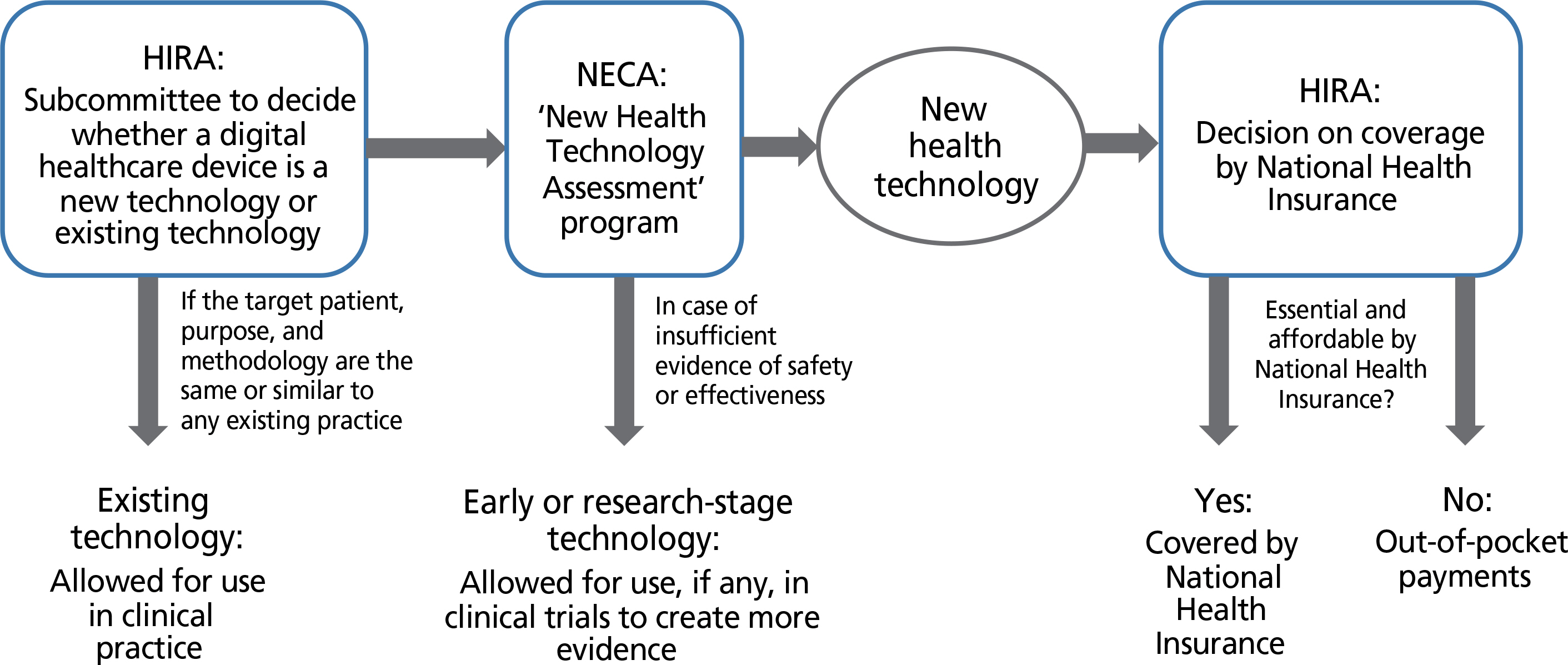References
3. Bluemke DA. Radiology in 2018: are you working with AI or being replaced by AI? Radiology 2018;287:365–366.
4. Park SH, Han K. Methodologic guide for evaluating clinical performance and effect of artificial intelligence technology for medical diagnosis and prediction. Radiology 2018;286:800–809.
5. Peterson ED, Harrington RA. Evaluating health technology through pragmatic trials: novel approaches to generate high-quality evidence. JAMA 2018;320:137–138.
6. The Lancet. Is digital medicine different? Lancet 2018;392:95.
7. AI diagnostics need attention. Nature 2018;555:285.
8. Park SH. Artificial intelligence in medicine: Beginner's guide. J Korean Soc Radiol 2018;78:301–308.
9. Chartrand G, Cheng PM, Vorontsov E, Drozdzal M, Turcotte S, Pal CJ, Kadoury S, Tang A. Deep learning: a primer for radiologists. Radiographics 2017;37:2113–2131.
10. Choy G, Khalilzadeh O, Michalski M, Do S, Samir AE, Piany-kh OS, Geis JR, Pandharipande PV, Brink JA, Dreyer KJ. Current applications and future impact of machine learning in radiology. Radiology 2018;288:318–328.
12. Lee M, Ahn J. The current status and future direction of Korean health technology assessment system. J Korean Med Assoc 2014;57:906–911.
13. Park SH. Regulatory approval versus clinical validation of artificial intelligence diagnostic tools. Radiology 2018;288:910–911.
15. Ministry of Food and Drug Safety. Guideline for regulatory approval · evaluation of medical devices using big-data and artificial intelligence technology (guide for civilians) [Internet] Cheongju: Ministry of Food and Drug Safety; 2017. [cited 2018 Aug 10]. Available from:
https://www.mfds.go.kr/brd/m_210/view.do?seq=13523.
16. Ministry of Food and Drug Safety. Guideline for evaluation of clinical efficacy of medical devices using artificial intelligence (guide for civilians) [Internet] Cheongju: Ministry of Food and Drug Safety; 2017. [cited 2018 Aug 10]. Available from:
https://www.mfds.go.kr/brd/m_210/view.do?seq=13613.
18. Park SH, Kressel HY. Connecting technological innovation in artificial intelligence to real-world medical practice through rigorous clinical validation: what peer-reviewed medical journals could do. J Korean Med Sci 2018;33:e152.
20. Luo W, Phung D, Tran T, Gupta S, Rana S, Karmakar C, Shilton A, Yearwood J, Dimitrova N, Ho TB, Venkatesh S, Berk M. Guidelines for developing and reporting machine learning predictive models in biomedical research: a multidisciplinary view. J Med Internet Res 2016;18:e323.
21. Hosny A, Parmar C, Quackenbush J, Schwartz LH, Aerts HJWL. Artificial intelligence in radiology. Nat Rev Cancer 2018;18:500–510.
22. Shah ND, Steyerberg EW, Kent DM. Big data and predictive analytics: recalibrating expectations. JAMA 2018;320:27–28.
23. AlBadawy EA, Saha A, Mazurowski MA. Deep learning for segmentation of brain tumors: impact of cross-institutional training and testing. Med Phys 2018;45:1150–1158.
24. Yuille AL, Liu C. Deep Nets: what have they ever done for vision? [Internet] Ithaca: arXiv.org; 2018. [cited 2018 Aug 10]. Available from:
https://arxiv.org/abs/1805.04025.
25. Lee JG, Jun S, Cho YW, Lee H, Kim GB, Seo JB, Kim N. Deep learning in medical imaging: general overview. Korean J Radiol 2017;18:570–584.
26. Zech JR, Badgeley MA, Liu M, Costa AB, Titano JJ, Oermann EK. Variable generalization performance of a deep learning model to detect pneumonia in chest radiographs: a cross-sectional study. PLoS Med 2018;15:e1002683.
27. Sica GT. Bias in research studies. Radiology 2006;238:780–789.
29. US Preventive Services Task Force. Bibbins-Domingo K, Grossman DC, Curry SJ, Davidson KW, Epling JW Jr, García FAR, Gillman MW, Harper DM, Kemper AR, Krist AH, Kurth AE, Landefeld CS, Mangione CM, Owens DK, Phillips WR, Phipps MG, Pignone MP, Siu AL. Screening for colorectal cancer: US Preventive Services Task Force Recommendation Statement. JAMA 2016;315:2564–2575.
30. Kim YJ, Lee WP. The process by which new health technology is listed for insurance coverage. J Korean Med Assoc 2014;57:927–933.
31. Fenton JJ. Is it time to stop paying for computer-aided mammography? JAMA Intern Med 2015;175:1837–1838.
32. Kohli A, Jha S. Why CAD failed in mammography. J Am Coll Radiol 2018;15:535–537.
33. Lehman CD, Wellman RD, Buist DS, Kerlikowske K, Tosteson AN, Miglioretti DL. Breast Cancer Surveillance Consortium. Diagnostic accuracy of digital screening mammography with and without computer-aided detection. JAMA Intern Med 2015;175:1828–1837.
35. Gulshan V, Peng L, Coram M, Stumpe MC, Wu D, Naraya-naswamy A, Venugopalan S, Widner K, Madams T, Cuadros J, Kim R, Raman R, Nelson PC, Mega JL, Webster DR. Development and validation of a deep learning algorithm for detection of diabetic retinopathy in retinal fundus photographs. JAMA 2016;316:2402–2410.
36. Ting DSW, Cheung CY, Lim G, Tan GSW, Quang ND, Gan A, Hamzah H, Garcia-Franco R, San Yeo IY, Lee SY, Wong EY, Sabanayagam C, Baskaran M, Ibrahim F, Tan NC, Finkelstein EA, Lamoureux EL, Wong IY, Bressler NM, Sivaprasad S, Varma R, Jonas JB, He MG, Cheng CY, Cheung GC, Aung T, Hsu W, Lee ML, Wong TY. Development and validation of a deep learning system for diabetic retinopathy and related eye diseases using retinal images from multiethnic populations with diabetes. JAMA 2017;318:2211–2223.
37. INFANT Collaborative Group. Computerised interpretation of fetal heart rate during labour (INFANT): a randomised controlled trial. Lancet 2017;389:1719–1729.
39. Steinhubl SR, Waalen J, Edwards AM, Ariniello LM, Mehta RR, Ebner GS, Carter C, Baca-Motes K, Felicione E, Sarich T, Topol EJ. Effect of a home-based wearable continuous ECG monitoring patch on detection of undiagnosed atrial fibrillation: the mSToPS randomized clinical trial. JAMA 2018;320:146–155.


